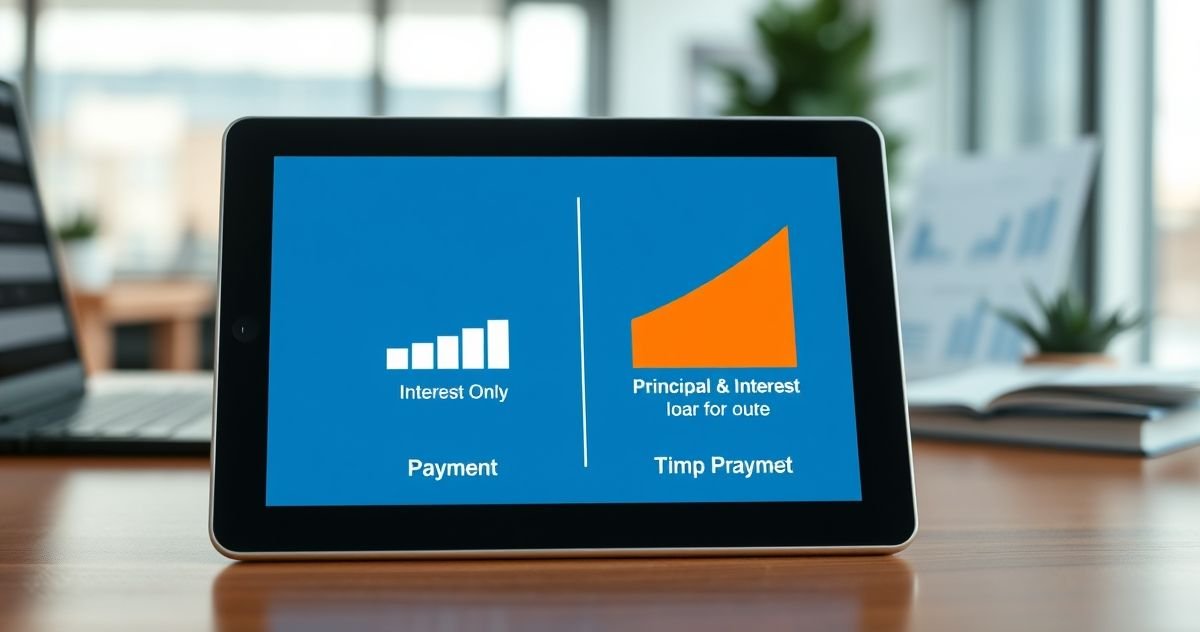The Basics of Interest-Only Loans
An interest-only loan is a financial product, most commonly seen in mortgages, that allows borrowers to pay only the interest portion of their loan for a specified period. This means your monthly payments are lower during the initial “interest-only period,” but you are not reducing the amount of money you originally borrowed (the principal).
How Interest-Only Loans Work
With a traditional loan, each payment gradually reduces the principal balance along with the interest owed. In contrast, an interest-only loan functions differently:
- Interest-Only Period: For a set number of years (e.g., 3, 5, 7, or 10 years), your payments cover only the interest charged by the lender. Your principal balance remains unchanged.
- Post-Interest-Only Period: Once the interest-only period concludes, the loan typically undergoes one of two changes:
- Repayment Period: The loan converts to a standard amortizing loan. Your payments increase significantly as they now include both principal and interest, calculated to pay off the remaining balance over the rest of the loan term.
- Balloon Payment: The entire remaining principal balance is due in a single lump sum payment at the end of the loan term. This structure is less common for residential mortgages today.
Example Scenario
Consider a $300,000 interest-only loan with a 5% annual interest rate for a 10-year interest-only period:
- During Years 1-10: Your monthly payment would be approximately $1,250 ($300,000 * 0.05 / 12). The principal balance remains $300,000.
- After Year 10: If the loan converts to a standard 20-year repayment schedule, your new monthly payment would rise to about $1,933, reflecting principal and interest. If it were a balloon loan, you would owe the full $300,000.
Who Might Consider an Interest-Only Loan?
These loans are often explored by:
- Individuals expecting future income growth: Borrowers anticipating a substantial increase in income might use the lower initial payments to manage cash flow until their earnings rise.
- Real estate investors: Investors may use them to maximize rental property cash flow, especially if they plan to sell or refinance before the interest-only period ends.
It’s important to note that lenders now have stricter qualification requirements for interest-only loans, often demanding higher credit scores, larger down payments, and substantial cash reserves.
Key Considerations and Strategies
- Affordability: Crucially, assess if you can afford the higher payments after the interest-only period concludes.
- Repayment Plan: Develop a clear strategy for paying down the principal, whether through anticipated income increases, investments, or property sales.
- Total Cost: Be aware that interest-only loans can result in paying more interest over the loan’s lifetime compared to traditional loans.
- Alternatives: Compare interest-only options with standard fixed-rate or adjustable-rate mortgages.
- Extra Payments: Consider making voluntary principal payments during the interest-only period to reduce the future payment shock.
Common Misconceptions
- Persistent Low Payments: A common myth is that payments will remain low indefinitely. Payments almost always increase significantly after the interest-only phase.
- Cost Savings: Borrowers might think they are borrowing money for free. However, interest is still being paid, and the total interest paid over the loan’s life can be substantial.
- Ease of Access: Contrary to popular belief, qualifying for an interest-only loan is more difficult now due to tightened lending standards.
Sources:
- What Is an Interest-Only Mortgage? | Forbes Advisor
- Interest-Only Loans: What They Are and How They Work | Consumer Financial Protection Bureau
- Interest-Only Mortgage: Pros, Cons, and How It Works | Bankrate
Want to understand how different loan types impact your long-term financial goals? Explore our guides on Fixed-Rate Mortgages and Adjustable-Rate Mortgages.

